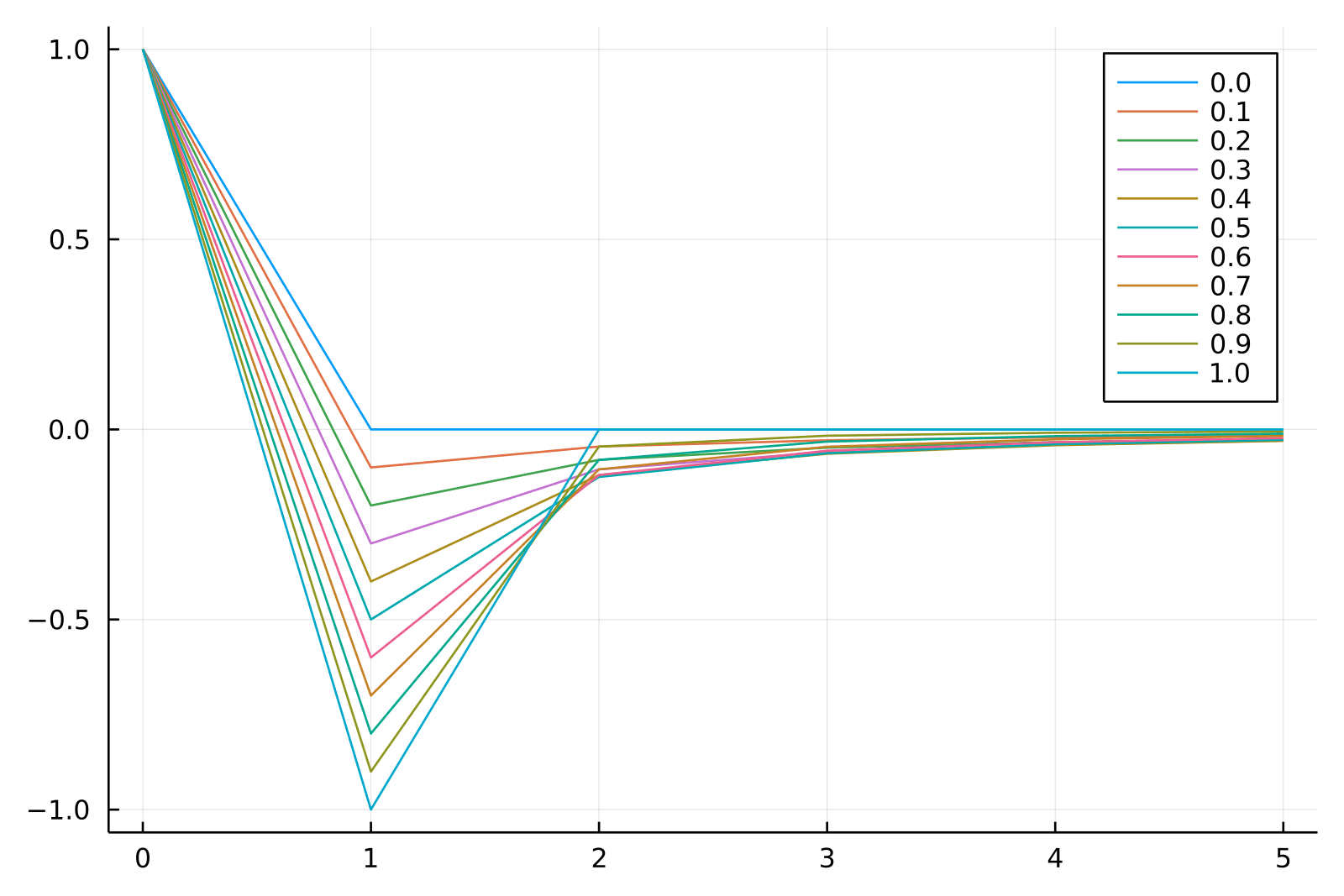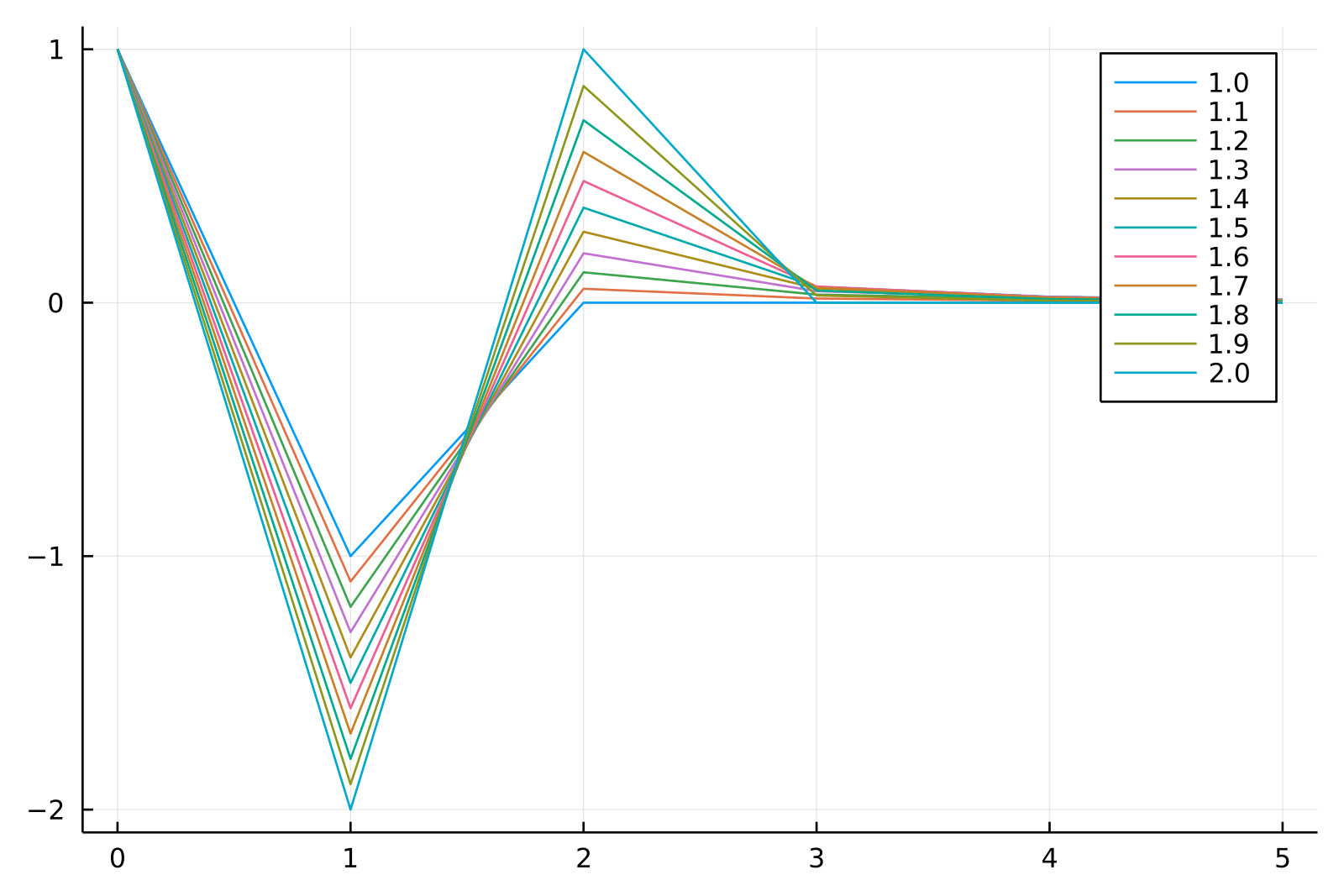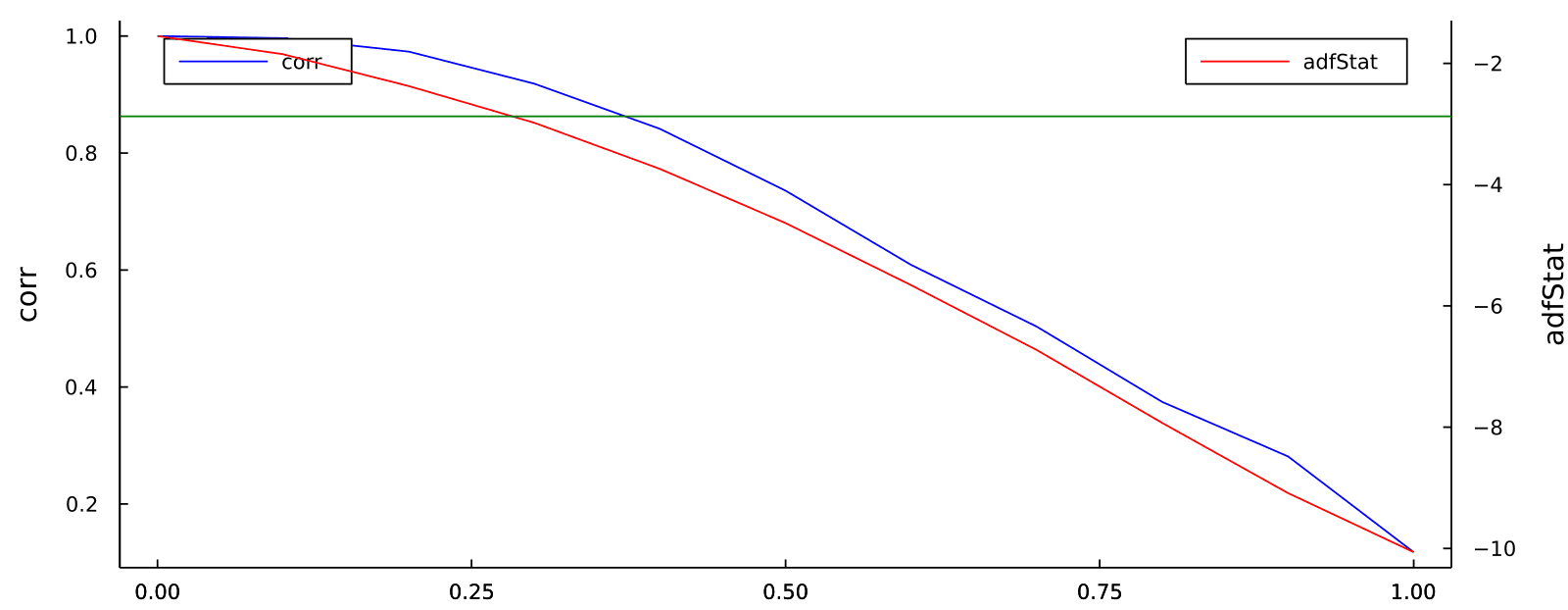- Published on
Fractional Differentiation and Memory
- Authors

- Name
- Tails Azimuth
Table of Contents
Fractional Differentiation and Memory
Traditionally, differentiation to an integer degree is used to make a series stationary. However, fractional differentiation allows the exponent to be a real number. This helps to preserve memory.
The fractional model is mathematically expressed using the backshift operator , and a real number exponent as:
The series is then a dot product:
Here, consists of weights calculated based on the degree . The weights alternate in sign and converge to zero as increases, providing an optimal balance between stationarity and memory.

Weight Sequence and Code Snippets
The sequence of weights can be generated iteratively as:

Python | Julia |
|---|---|
| |
These functionalities are available in both Python and Julia in the RiskLabAI library.
Convergence of Weights
The weights, , tend to zero as increases. Also, the sign of alternates depending on whether is an integer, even or odd. This property is vital for balancing stationarity and memory in the series.
In summary, fractional differentiation offers a powerful method for transforming non-stationary financial time series into stationary ones while preserving as much memory as possible. This is essential for both inferential statistics and machine learning models in finance.
Fractional Differentiation Methods for Time Series Analysis
In this blog, we'll focus on two techniques for fractional differentiation of a finite time series: the "expanding window" method and the "fixed-width window fracdiff" (FFD) method. These techniques are essential for handling non-stationary time series data in financial analytics.
Expanding Window Method
Given a time series ( { X_t }, t=1, \ldots, T ), this approach involves using varying weights ( \omega_k ) to calculate the fractionally differentiated value . The weights depend on the degree of differentiation ( d ) and a tolerance level ( \tau ), which limits the acceptable weight loss for the initial points.
You select a ( l^* ) such that and . This is to ensure that the weight loss doesn't go beyond a certain threshold.
Python | Julia |
|---|---|
| |
The Fixed-width Window Fracdiff (FFD) method maintains a constant vector of weights that do not fall below a given threshold ( \tau ).
Thus, the differentiated series is computed as follows:
Python | Julia |
|---|---|
| |
Achieving Stationarity
Both methods allow for the quantification of how much memory (or autocorrelation) needs to be removed to achieve a stationary series through the coefficient ( d^* ). Many finance studies have traditionally used integer differentiation, often removing more memory than necessary and potentially losing predictive power.
Python | Julia |
|---|---|
| |

References
- De Prado, M. L. (2018). Advances in financial machine learning. John Wiley & Sons.
- De Prado, M. M. L. (2020). Machine learning for asset managers. Cambridge University Press.